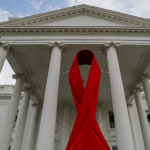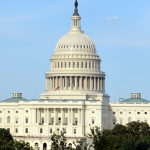More than 3 million LGBTQ adults over age 50 live in the U.S. – and more than half of them feel lonely.
LGBTQ older adults are three or four times less likely than older Americans in general to be parents – meaning in most cases they don’t have children able to take care of them. They’re twice as likely to live alone, according to LGBTQ elder advocacy organization SAGE.
But these problems often regularly go unnoticed. “Invisibility is one of the biggest challenges that LGBTQ elders face,” says Michael Adams, CEO of SAGE.
“This is in the context of a country where adult children and spouses and partners are the primary sources of care and support for older people later in life,” Adams adds.
This population is set to reach about 7 million by 2030, meaning millions more could face the same feelings. While LGBTQ elders face unique complications when it comes to aging, programs around the country offer ways to help them attain emotional, physical and financial security.
“There are real gaps here. There are real challenges here. And we’re also talking about a very resilient community of elders,” Adams says.
SAGE offers services and programs that are specifically designed for LGBTQ elders –think traditional senior centers with hot meals and exercise classes but in a dedicated safe space. The pandemic has evidently migrated certain programs online.
Dominique Lebreton, 60, found comfort in SAGE through its video chat services and made a friend she speaks with for about an hour a week. Her adoptive daughter – a member of her “chosen family” – introduced her to the organization and helped her enroll.
The New York resident is grateful for the respite from isolation. “I didn’t expect to get past 60, the whole thing just seemed like a hopeless endeavor,” she says. Lebreton, who is transgender and bisexual, also has the mental health condition dissociative identity disorder due to childhood trauma.
“When that day comes, if that day comes, in-person would be nice,” she says. “I’m in no hurry for it to happen because it’s dead of winter.”
The organization provides case management services, like helping somebody sign up for Medicare veterans benefits, or helping a person transition from a three-story walk up into an apartment that is on the ground floor because they can no longer get up and down the stairs. The group also helps train nursing homes on how to work respectfully and effectively with LGBTQ elders.
Several factors contribute to higher levels of poverty among LGBTQ older folks. Historically, employment benefits have not been made available in equal terms for LGBTQ people, like health insurance for partners, Adams said. As of 2018, 17% of new HIV diagnoses in the U.S. came from people 50 years old and above.
“The cumulative impact of discrimination in the workplace and denial of workplace benefits over the lifetime creates poverty and we see that in the statistics about retirement savings and assets that LGBTQ older people have as they enter retirement,” Adams says.
Being a part of SAGE’s leadership was a no-brainer for Adams after watching his grandmother age. Even someone with loyal, loving people around still struggled with aging. What would it be like for someone without anyone around?
“It just kept on hitting me how incredibly difficult it would be for members of my own community, members of the LGBTQ+ community, who get to that point in life, but don’t have any of those supports, don’t have any of that family structure,” Adams says.
Learn about the history. Stonewall Community Development Corporation also offers programs to help aging community members. Executive director Paul Nagle told program director Sayief Leshaw something that inspired him to get involved with Stonewall in the first place: The generation of older adults that were in the streets – i.e. in the wake of the Stonewall riots in 1969 – are the ones that are now having to go back into the closet to safely access services.
Pay attention to needs of community. “Whether it is serving as a volunteer in a community-based organization like SAGE, or just opening our eyes and noticing that the person who lives down the street from us or down the hall from us might be an elder living in isolation who needs support, who needs friendship and also recognizing that our elders are vibrant people in our community, but they’ve contributed so much to our community,” Adams says.
Don’t throw this group a pity party. “We’re talking about incredibly resilient people,” Adams says. “We’re talking about elders who’ve lived through decades of oppression, discrimination, invisibility, violence, and who have not only survived, but continued to thrive.”
This article originally appeared in USA TODAY on January 6, 2022.







